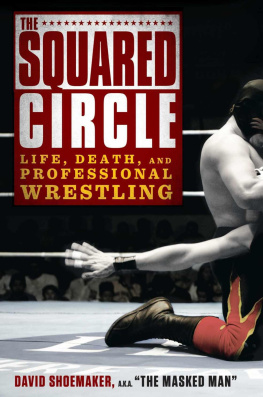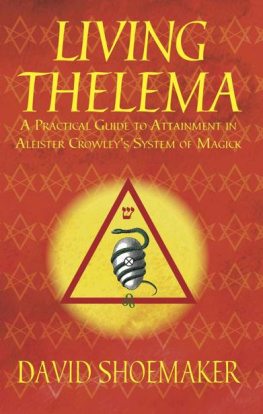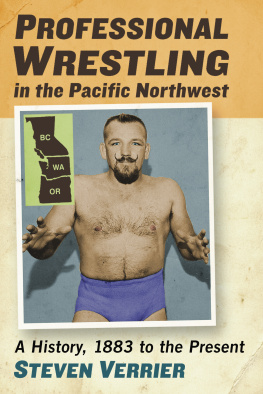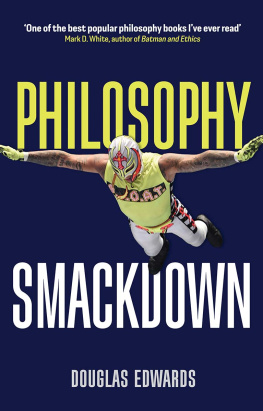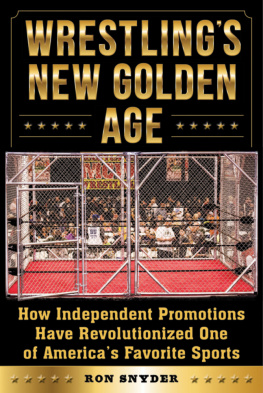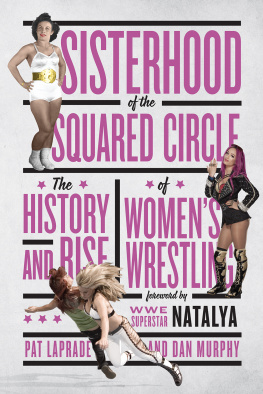USA | Canada | UK | Ireland | Australia | New Zealand | India | South Africa | China
Penguin supports copyright. Copyright fuels creativity, encourages diverse voices, promotes free speech, and creates a vibrant culture. Thank you for buying an authorized edition of this book and for complying with copyright laws by not reproducing, scanning, or distributing any part of it in any form without permission. You are supporting writers and allowing Penguin to continue to publish books for every reader.
Shoemaker, David.
The squared circle : life, death and professional wrestling / David Shoemaker.
1. Wrestling. 2. WrestlingSocial aspects. I. Title.
While the author has made every eff ort to provide accurate telephone numbers, Internet addresses,and other contact information at the time of publication, neither the publisher nor the author assumesany responsibility for errors or for changes that occur after publication. Further, the publisherdoes not have any control over and does not assume any responsibility for authoror third-party websites or their content.
To Mom and Dad, who never made me turn the channel when this junk was on.
INTRODUCTION
In modern professional wrestling, the really compelling shows start with what they call a cold openthey skip the theme song, skip the formality, and get right to the meat. So let me try to do that here:
This is a book about dead wrestlers.
It was supposed to be, anyway. But along the way, it became a history of professional wrestling told through the stories of people who made the myths and who thereafter died. Its the story of a mythology populated not by gods but by real men, fallible mortals who served as vessels for a larger truth, men who lived the lives of kings and who suffered to be our idols. This is the ultimate fakery of wrestlingthat the emperor has no clothes, that the gods are mortals. But in reliving their lives, what became clear is that the mythology is what matters the most. We make our own gods for our own purposes. And we love them, and thats the whole point.

D ad took me to a wrestling show in 1987 at Freedom Hall in Louisville, Kentucky. Dad was no wrestling fan himself, but he knew how much it meant to me to see Hulk Hogan square off against the nefarious Killer Khan. My only concrete memory of the night was that the Hogan-Khan main event went on halfway through the card. When Hogan dispatched the Mongolian monster, I felt for a moment like it was time to leave; that was the main event, after all. It was a bit off-putting until my dad suggested that they must have done it that way because Hogan had a flight to catch. Even as a nine-year-old, I knew that this made sense, that there were perfectly good real-life situations that took precedence over wrestling reality; even as we were screaming along to the matches as we were supposed to, as the WWF matchmakers choreographed the night for us to, everybody in the arena knew this. Which is to say, we were in on the joke.
Thats the first thing most people get wrong about wrestling fans. We can whoop for the good guys, hiss at the heel antics, and still know that the show is, well, a show. It was a year prior to that Hogan-Khan match when I was first awakened to the complexities of pro wrestling, when a group of good-guy wrestlers showed up in the WWF calling themselves the Machines. There were two of them at first: a burly, nondescript guy called Super Machine (I was too young at the time to recognize him as Bill Eadie, who would later go on to great fame as Ax of the tag team Demolitionhis moniker here was a play off of his previous gimmick as the Masked Superstar, a headliner in the Mid-Atlantic territory), and an enormous, stoop-necked monolith called Giant Machine. Even as a child I could see that Giant Machine was Andre the Giant.
Andre had been suspended earlier that year when he failed to show up for a match with two wrestlers from wicked manager Bobby The Brain Heenans troupe. Now he was back, in disguise, and ready to resume his feud with the Heenan Family. As a kid, this was delicious comeuppance for Heenan, who had used every trick in the book to try to steer his wrestlers to victory over the good guys I idolized. Despite Heenans loud insistence that Giant Machine was Andre, there was nothing the WWF officials could do, the mask being sacred territory in the wrestling world. (Almost every time a masked wrestler has wrestled, his opponents have tried to unmask him. Thats the law of the jungle, thoughopposing wrestlers can prove their point by unmasking him in the course of a match, but thats the only way it will happen.) Eventually the Machines (and their manager, Captain Lou Albano) were joined by other teammates. First came Big Machine (who was really Blackjack Mulligan, but to me he was another generic behemoth), then later Animal Machine (indisputably George The Animal Steele), then Hulk Machine (Hulk Hogan, he of the most identifiable copper-tanned physique in the business), and later Piper Machine (who was so intent on being identified as Rowdy Roddy Piper that he was wearing a kilt). With every new partner, I cheered and laughed at the Heenan Familys misfortune.
Of course, the whole point was that we could see what Heenan could see, but nobody elsenot the announcers, not the referees, not the WWF front officecould tell. The entire joke was that we were in on the joke.
My grandfather used to tell a story about a wrestling show in small-town North Carolina. A reporter from the local newspaper was assigned to cover the event, but he had someplace else to be on the night of the event, so he went by the arena the day of, watched the guys warming up, took some notes, and then asked the promoter who was going to win each match so that he could file his story ahead of time. He did. But, the story goes, there was a terrible storm that night, and the show was canceled. When the newspaper came out the next day with all the results listed, the townsfolk were infuriated and, in my grandfathers words, just about ran the reporter out of town with pitchforks and torches.
Note that the townsfolk didnt run the wrestlers out of town; they went after the journalist. They knew full well what the reality of wrestling wasthey were in on the joke. They just expected that the journalist would stay complicit in the enterprise. That a writer writing about wrestling would be a fan first and a critic second. Anyway, thats where Im coming from.

A quick note about facts. Not long after the Machines storyline, Andre turned to the dark side and was set against Hulk Hogan in a battle for the centuries. He beat Hogan on a dire episode of Saturday Nights Main Event that I watched with my whole family on my parents bed. I really have no idea why we were all watching; nobody else was a wrestling fan, and that was the only time it happened. But that night, with my parents and my sister bearing witness, the Million Dollar Man Ted DiBiaseAndres partner in crimestole the WWF title away from Hogan by furtively putting Earl Hebner in as the referee in place of his brother, Dave, who was the referee of record. The story goes that he paid for Earl to have plastic surgery to look just like Dave, so the two were indistinguishable except for their morals and motives. (In reality, the two were identical twins, and Earlhimself a longtime WWF refhad only briefly been removed from television prior to the

